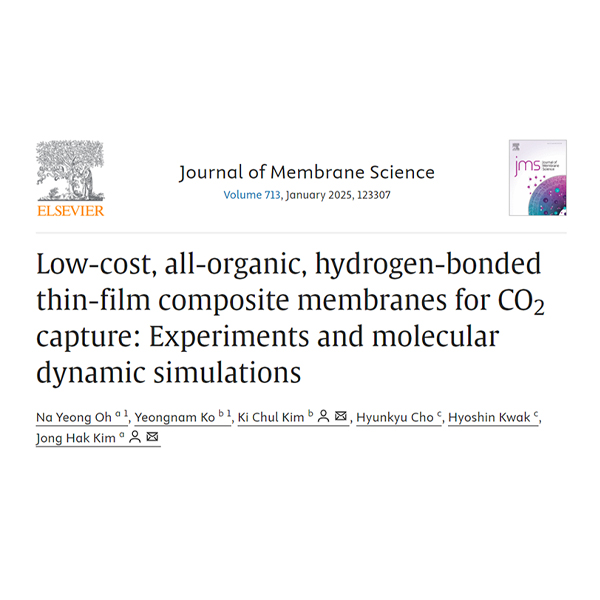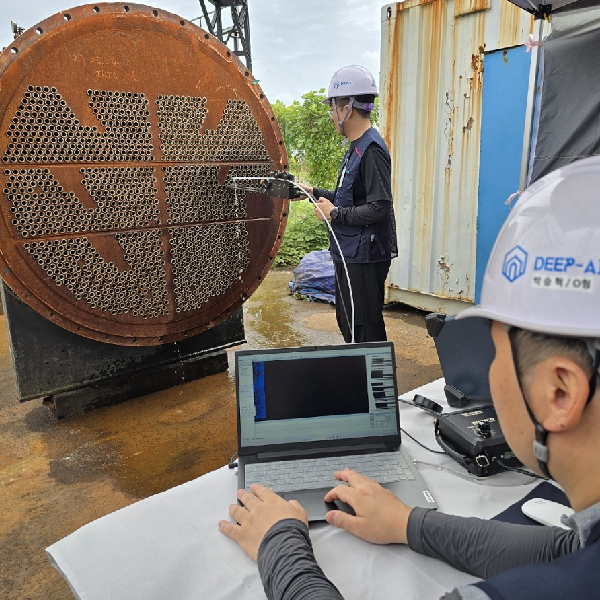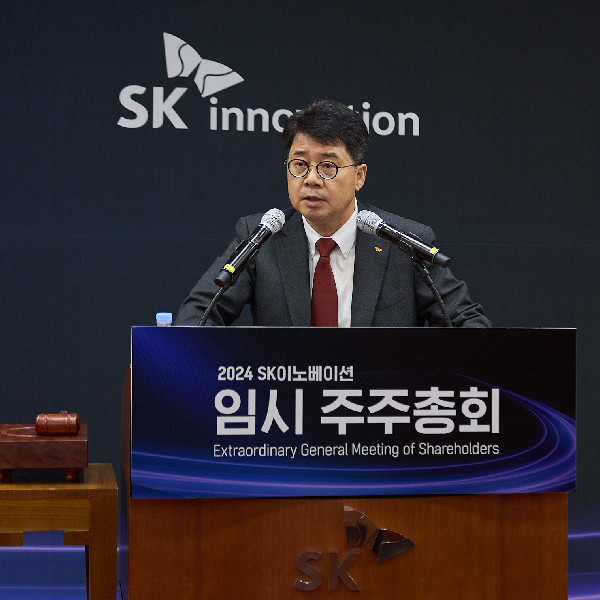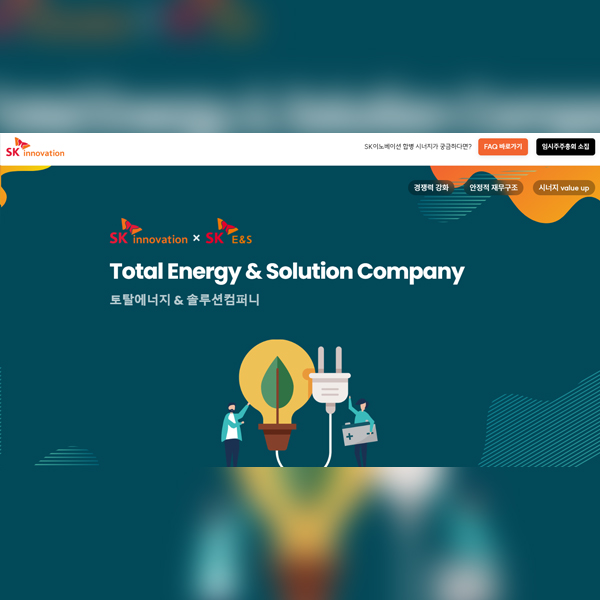 SK Innovation
SK Innovation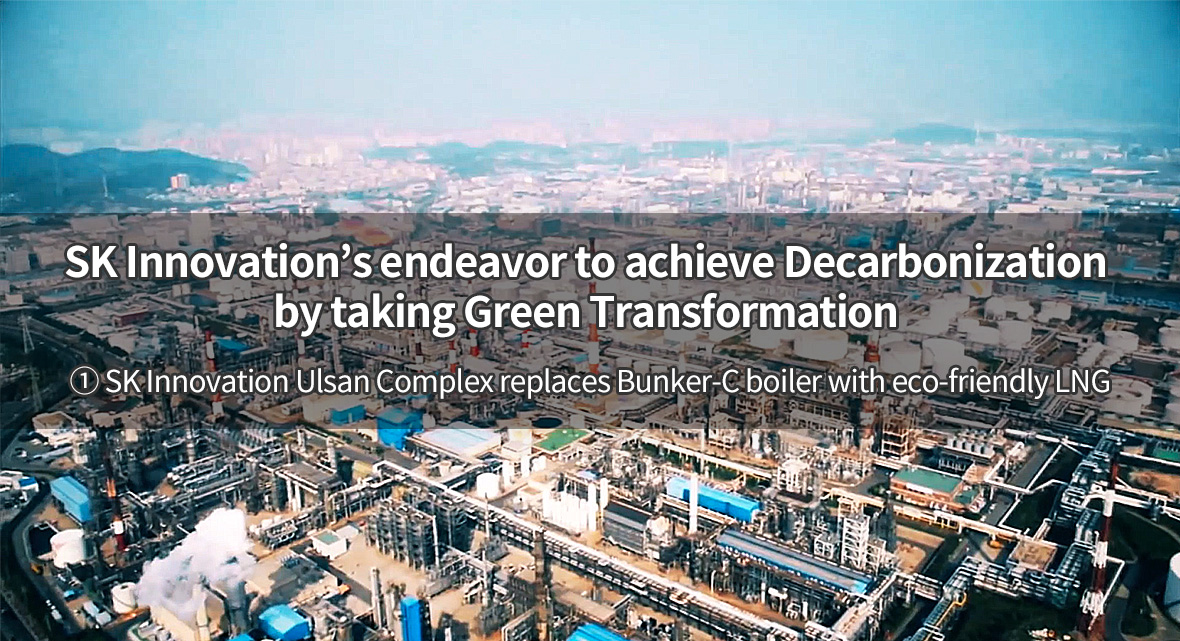
In the special event “Story Day” held on July 1st, SK Innovation announced the Green Transformation strategy that aims to switch the existing petrochemical industry to a green one. So how is the company taking this transformation? Let’s find the answers through our new series: SK Innovation’s endeavor to achieve Decarbonization by taking Green Transformation.
In the first episode of this series, we will visit SK Innovation Ulsan Complex (hereinafter referred to as “Ulsan CLX”), where the fuel for power boilers(1) was changed from Bunker-C (B-C)(2) to eco-friendly LNG. We have Head of Utilities Plant Park Jae-hong as the special guest of this episode to help us understand this transformation better.
(1) Power boiler: A power boiler produces and supplies 500 to 1,000 tons of steam per hour to turbines that drive the whole process of Ulsan CLX. Power boilers are indispensable to the stable operation throughout the entire process of Ulsan CLS by running turbines just like engine combustions in an automobile.
(2) B-C (Bunker-C): It is the most prevalent type of oil splits (about 40% yield rate) and refers to the mixture of the residual oils comprising of what is left after the lighter oil from Naphtha oil with atmospheric residue or any atmospheric residues themselves.

▲ Park Jae-hong, Head of Utilities Plant
01. First of all, what is the strategic goal of the Green Transformation at Ulsan CLX?
Our ultimate goal is to achieve “Net Zero Ulsan CLX.” For example, Ulsan CLX has already stopped using Bunker-C oil that generates a high amount of CO2 and air pollutants in every petrochemical product producing furnace in Ulsan CLX since September 2018. The fuel conversion project of power boilers in February this year marks the end of the use of Bunker-C in the entire processes of Ulsan CLX.
In particular, the eight units of power boilers in Ulsan CLX will solely rely on eco-friendly fuel, LNG. It can be seen as the first step toward the Net Zero target.
02. What are the difficulties you have faced during this all-out conversion to LNG?

▲ (Left) The existing Bunker-C boiler that Ulsan LCX had used for decades /(Right) Ulsan CLX’s power boiler that consumes eco-friendly fuel, LNG, only.
As for the general process of production, we were able to take advantage of a regular maintenance session to stop the operation and execute the project. However, as it is not the case for a power station that needs to ensure a stable supply of steam during the project, we had to do it step by step. So we had no alternative but to simultaneously conduct both plant operation and construction work for a long haul – a year and a half. The most daunting challenge in the process was to ensure appropriate safety control and stable operation. And we were eventually able to complete the project without any accident occurred in a facility or to a person through accurate steam demand prediction and thorough safety control.
03. What are the expected effect of the full conversion to LNG and other future plans?
We expect to lower CO2 by 160 kilotons and nitrogen oxides by 858 tons a year, about 25% and 75% compared to previous years, respectively. It is equivalent to annually planting more than 60,000 trees. Also, as boiler efficiency has improved, we can cut down fuel consumption. The relevant energy saving cost is expected to be around KRW 12 billion each year.
We will continue to take the lead in applying a broader range of environmentally friendly and renewable energy to Ulsan CLX, including small Combined Heat and Power (CHP) generation, hydrogen fuel cell, photovoltaic business, and others.
Click the video below with English subtitle to learn more about the story:
Following the case of Ulsan CLX that attained a full transition to eco-friendly fuel, SK Innovation continues to undertake various green transformations to realize the company’s decarbonization plan.










 Youtube
Youtube Facebook
Facebook Instagram
Instagram Linkedin
Linkedin











